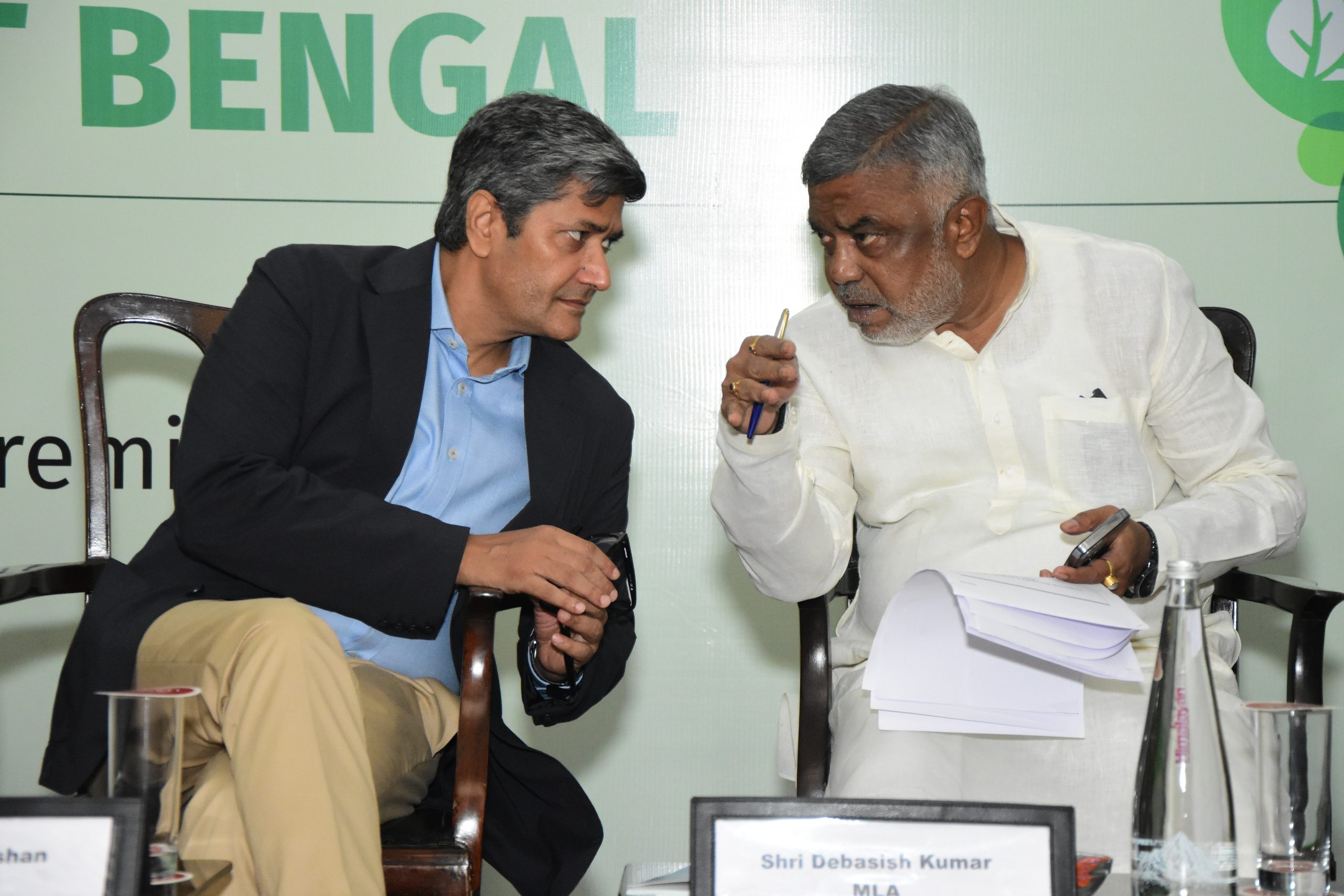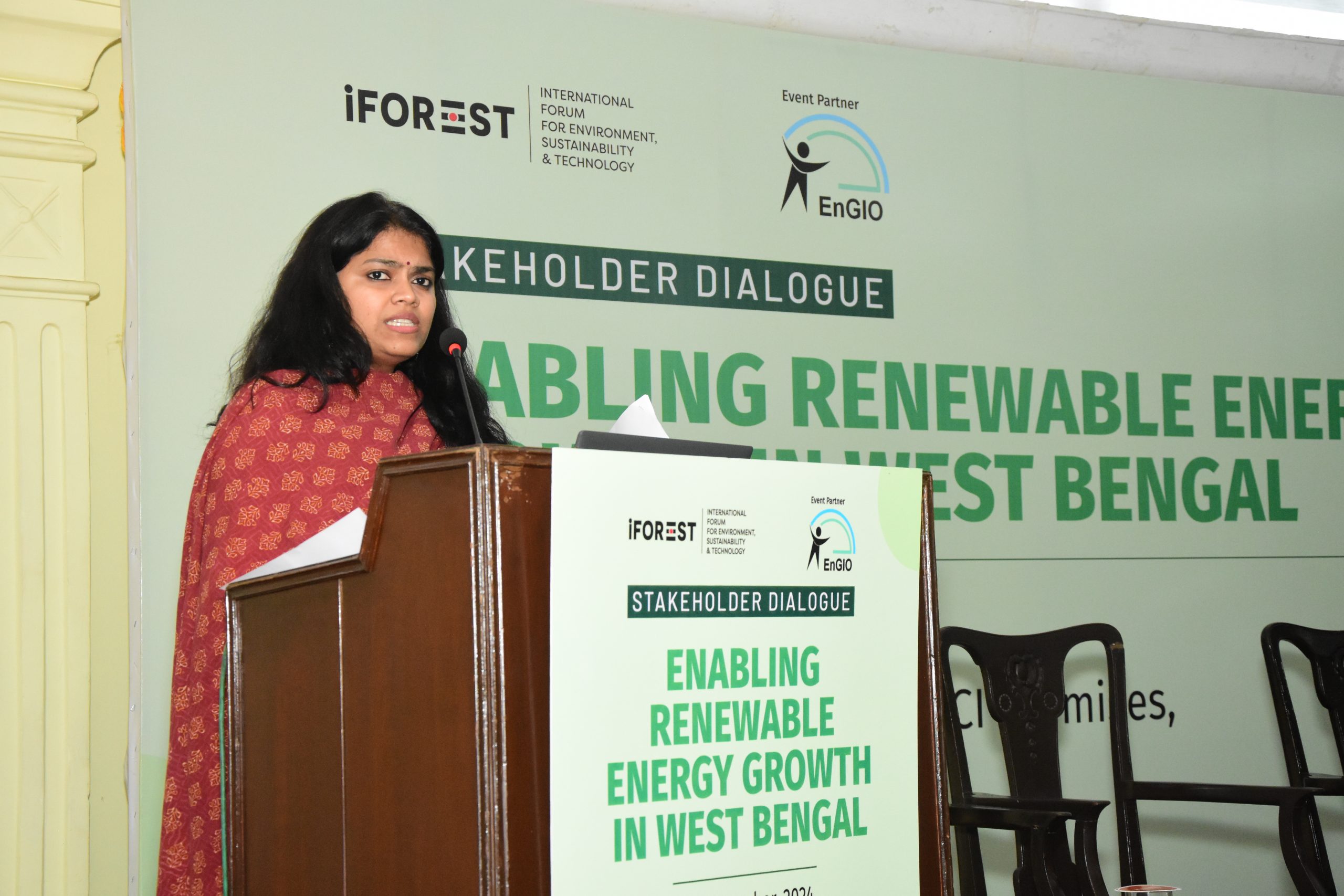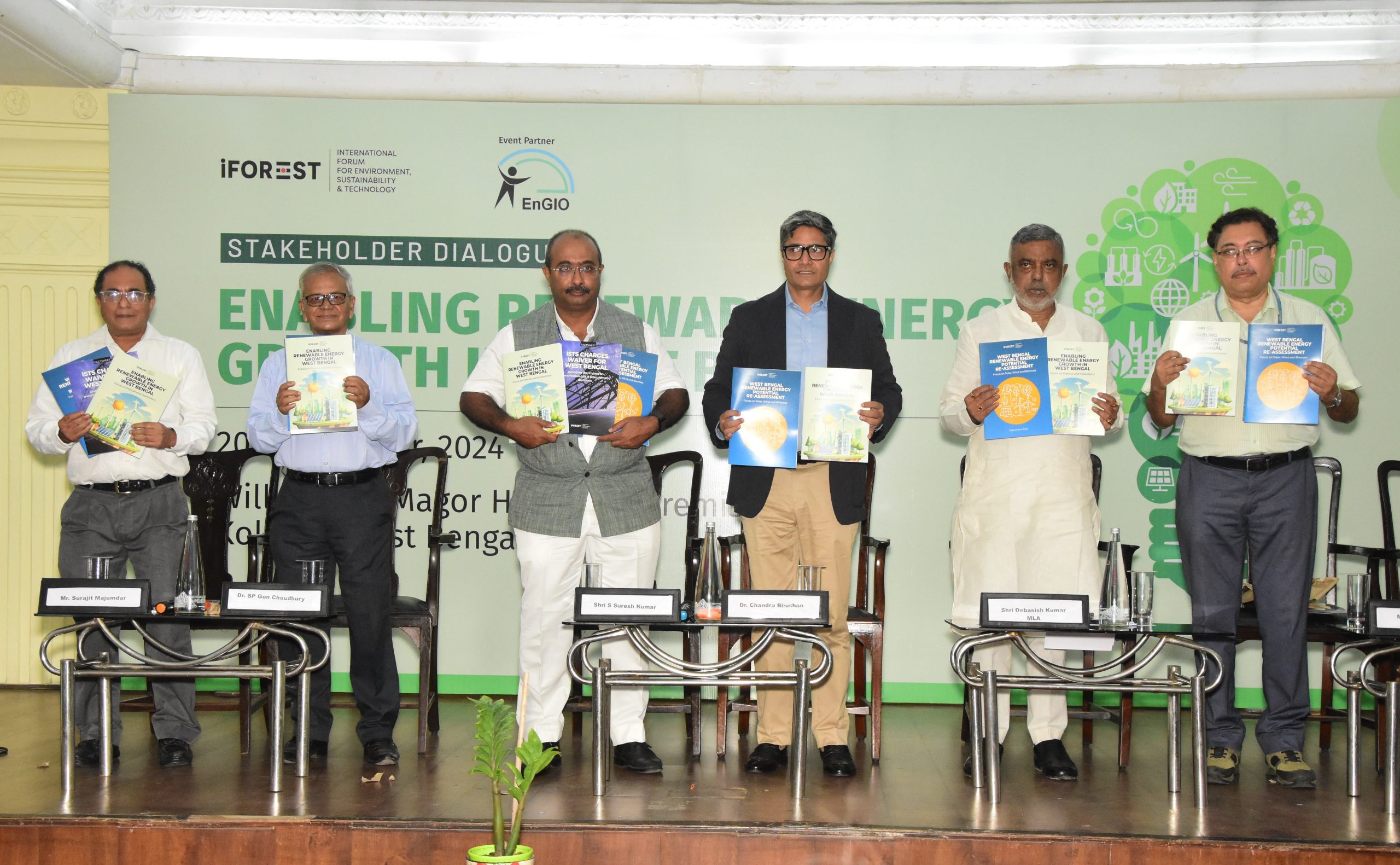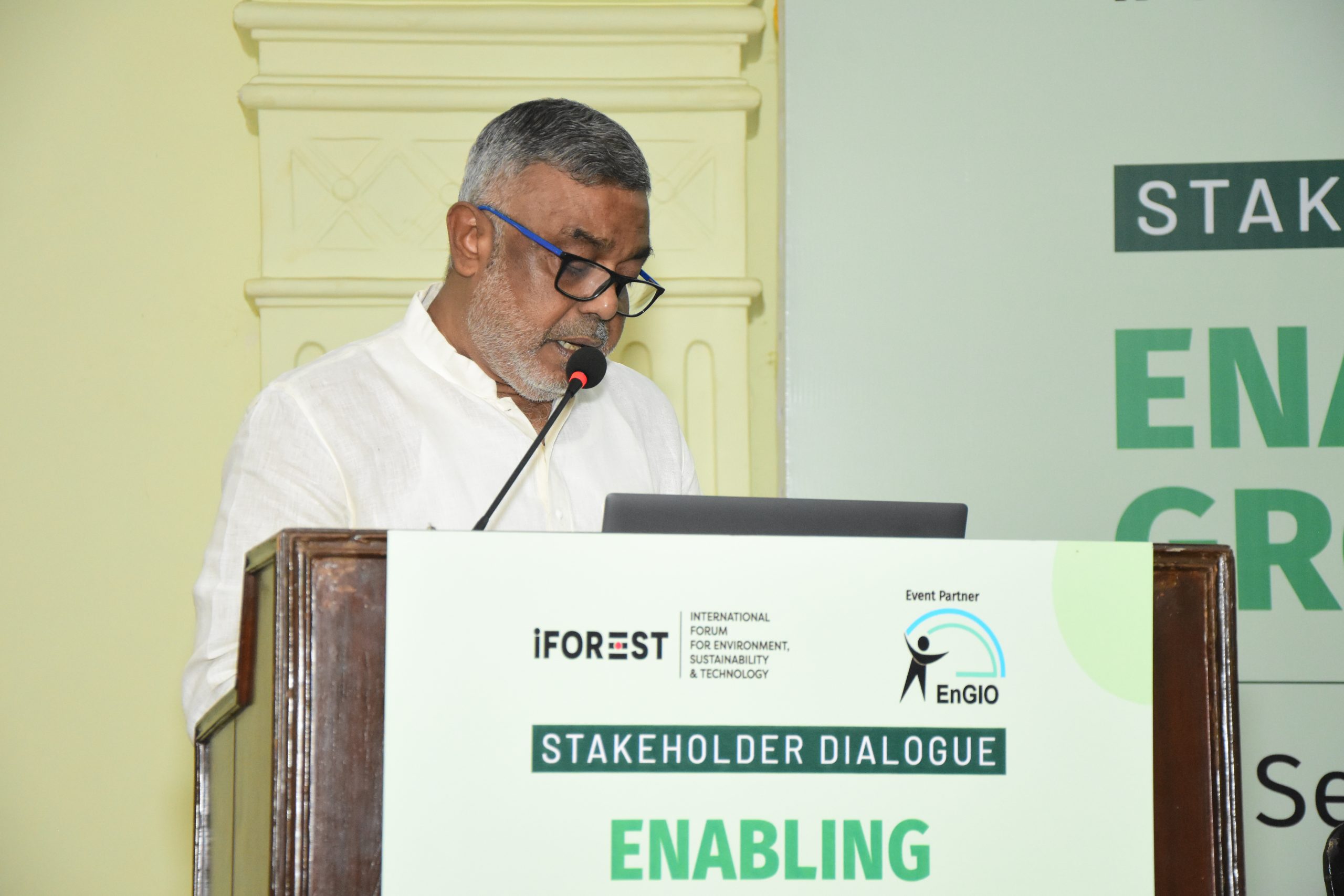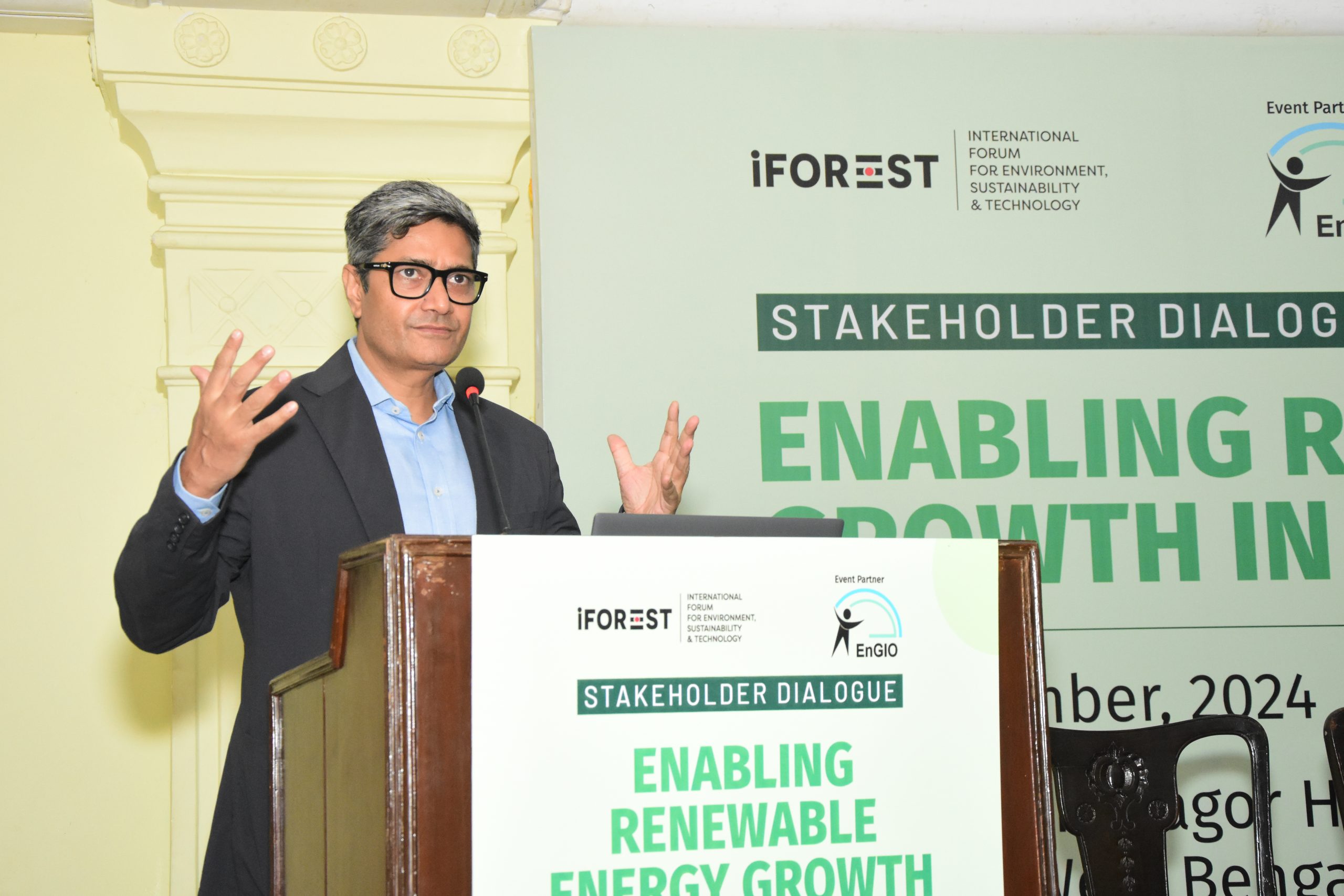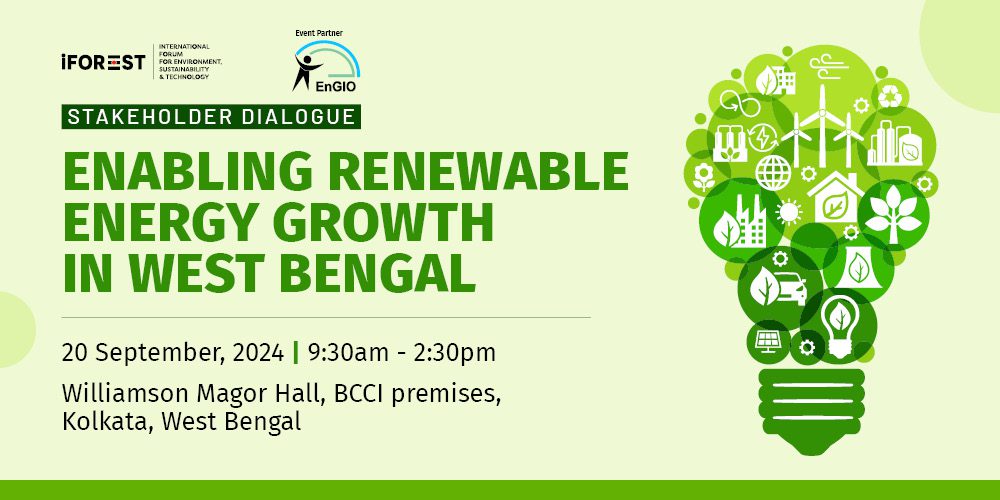
Stakeholder Dialogue – Enabling RE Growth in West Bengal
The International Forum for Environment, Sustainability, and Technology (iFOREST), a leading environmental think tank, convened a stakeholder dialogue titled “Enabling Renewable Energy Growth in West Bengal” on the 20th of September, 2024 at the BCCI premises, Kolkata.
At present, the renewable energy (RE) potential of West Bengal remains minimally developed with only 640 MW of RE capacity installed as of April 2024. A reorientation of approach towards RE is crucial from multiple perspectives – enhancing contribution to the global climate mitigation goals while creating new jobs in a booming sector. Further, given the significant state dependence on coal for power generation, gradually building the RE capacities would help support a just energy transition of the state in the coming years.
During the conference, iFOREST released three reports highlighting the tremendous potential of RE growth in West Bengal:
1. ‘West Bengal Renewable Energy Potential Re-Assessment’: A perceived lack of potential has been a fundamental reason for the lack of investment momentum in West Bengal’s RE sector. At present, the RE potential assessment for most technologies has been undertaken over a decade ago and is largely based on generic thumb rules. In this context, iFOREST has conducted a comprehensive re-assessment of the RE potential for West Bengal, utilising updated datasets and a more granular methodology. The study finds:
- Potential for solar ground-mounted is over 19,000 MW, three times the MNRE estimated potential. About 56% of the potential is in Puruliya district.
- Across the 30 major dams in the state, the floating solar PV potential is estimated to be 3,567 MW. Kangsabati dam provides the largest individual potential of 1,790 MW.
- For wind power projects, a theoretical potential of close to 20,000 MW is identified at a hub height of 100 m above ground level (AGL), and about 23,000 MW at 150 m AGL (at 100% utilisation).
- Biomass potential is estimated at 2,864 MW, double the MNRE assessment. Paschim Medinipur, South 24 Parganas and Purba Bardhhaman districts account for half of the assessed potential
2. ‘ISTS Charges Waiver for West Bengal: Decoding the impact on transmission bills and procurement decisions’: At present, West Bengal depends heavily on RE imports from other states to meet its RPO requirements. However, the RE imports are scheduled to become significantly expensive in the coming years as the waiver available on transmission cost on inter-state RE procurements is phased out between 2025 and 2028. This factsheet by iFOREST estimates the current Inter-State Transmission System (ISTS) charges waiver to be as high as 90 paise/unit. Once these charges are accounted for in the procurement costs, it will be cheaper to procure power from RE plants located within West Bengal.
3. ‘Enabling Renewable Energy Growth in West Bengal’: The current RE policy in West Bengal is now over a decade old. Further, like most ‘low-RE’ states, the institutional set-up in West Bengal lacks the required organizational strength to develop the RE sector effectively. This discussion paper by iFOREST suggests the need for a ‘transformational change’ in the RE sector:
- · A policy framework that outlines a clear and ambitious vision for the state’s RE sector and prioritizes investment promotion, particularly in high-potential RE segments.
- · The development of strong state institutions with adequate capacity and capabilities to act as growth facilitators and anchors.

